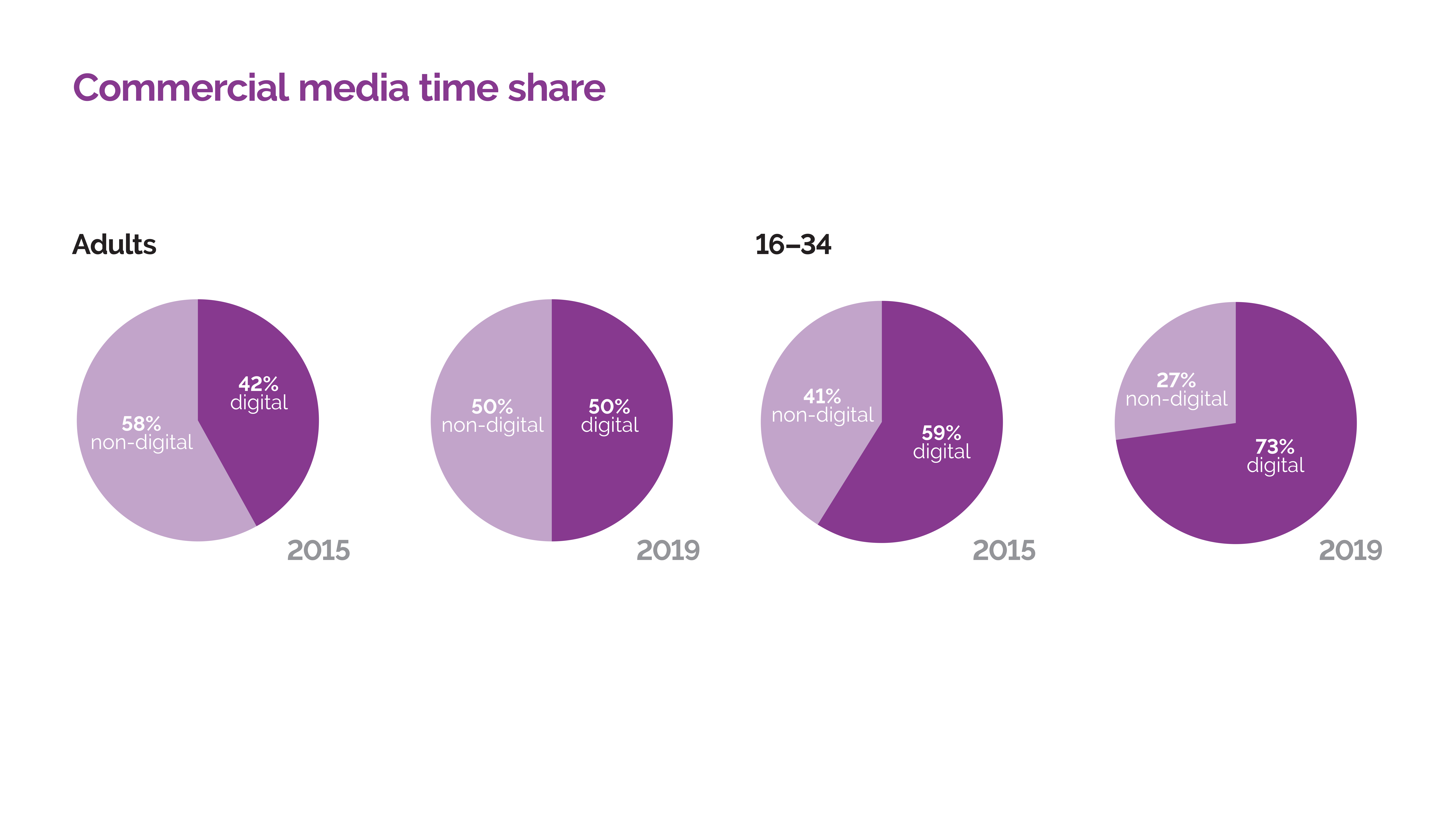The gap between how younger and older generations are consuming commercial media has increased dramatically over the past five years. This is according to a new IPA report 'Making sense. The commercial media landscape' that highlights the subsequent imperative for agencies to deploy diverse media plans to maximise overall campaign performance.
TouchPoints data report
According to the report, the correlation between the media use of 16-34-year-olds and 55+s from a time-spent perspective was 58% in 2015, but this has fallen by more than half to 25% in 2019. Although less marked, a similar story is seen when looking at the correlation in the reach of channels, falling from 44% in 2015 to 35% in 2019, which further indicates increasingly disparate media behaviours between these age groups. The report also reveals that the driving force behind such change is the rapid rise of the smartphone yet it questions the general impact of subscription-based services on the commercial media landscape.
The report, published in partnership with Facebook, is designed to help advertisers and their agencies better understand the commercial media landscape. Featuring analysis from effectiveness expert Les Binet, the research uses TouchPoints data to break down the broad commercial media landscape today; how consumers are spending their media day; and how media behaviours are diversifying across different age groups.
Further key findings:
- Across all adults, two media channels (Commercial TV and OOH) command the highest reach and time spent, followed by Functional Internet and Social Media.
- OOH and Social Media are the two primary channels for 16-34s and both share the similarity of being largely place-based media channels, with social media often consumed on mobile.
- The amount of time all adults spend with digital media* has increased by 19% in five years, from 42% in 2015 to 50% in 2019. This growth is particularly prevalent among 16-34s, who spend 73% of their time with digital channels up from 59% in 2015, marking a 24% growth in five years.
- Despite the apparent meteoric rise of Netflix to 37% weekly reach of All Adults, the split between commercial and non-commercial curated media share of time has only changed by one percentage point since 2015 while the average time spent with all curated media per day has remained exactly the same at 8 hours and 27 minutes.

Says Les Binet, Group Head of Effectiveness, adam&eveDDB, who has provided analysis on the report: “Different age groups now have very different patterns of media consumption, and this is likely to persist. Indeed, the great Digital Transformation probably won’t be complete until the pre-internet generation is dead and buried. This makes life more complex for marketers, but it also makes it more interesting. We need to master a wider range of channels now, but we can use them to evoke a wider range of effects.”
It is clear from the results of this report that a ‘one size fits all’ media approach is likely to be less effective than it was previously.
Says Simon Frazier, Senior Research and Marketing Manager, IPA: “It is clear from the results of this report that a ‘one size fits all’ media approach is likely to be less effective than it was previously. Whilst broad reach is still essential for profitable brand growth, how advertisers achieve that broad reach is becoming more varied across age groups.”
Says Pete Buckley, Connection Planner, Northern Europe – Facebook, “The report shows that for the first time 50% of commercial media time is now spent with digital channels*, whilst for 16-34s, digital now commands 73% of time. These shifts mean it’s becoming increasingly important for the industry to grow its digital brand-building muscle, since focusing on these channels as short-term response drivers alone may result in brands missing out on the biggest opportunity of our generation.”
"Making sense. The commercial media landscape" is free to download
The IPA’s TouchPoints database was created to meet the needs of the communications industry.
It offers agencies, media owners and advertisers unbiased and consistent insights into the daily life and media usage of people in Great Britain and how this is changing over time. The survey is media neutral and provides context for all media consumption. Throughout Making sense. The commercial media landscape, the IPA has taken care to ensure the data is presented in a media neutral way.
*Digital refers to any form of media which requires an internet connection. Non-Digital refers to media which does not require an internet connection.



